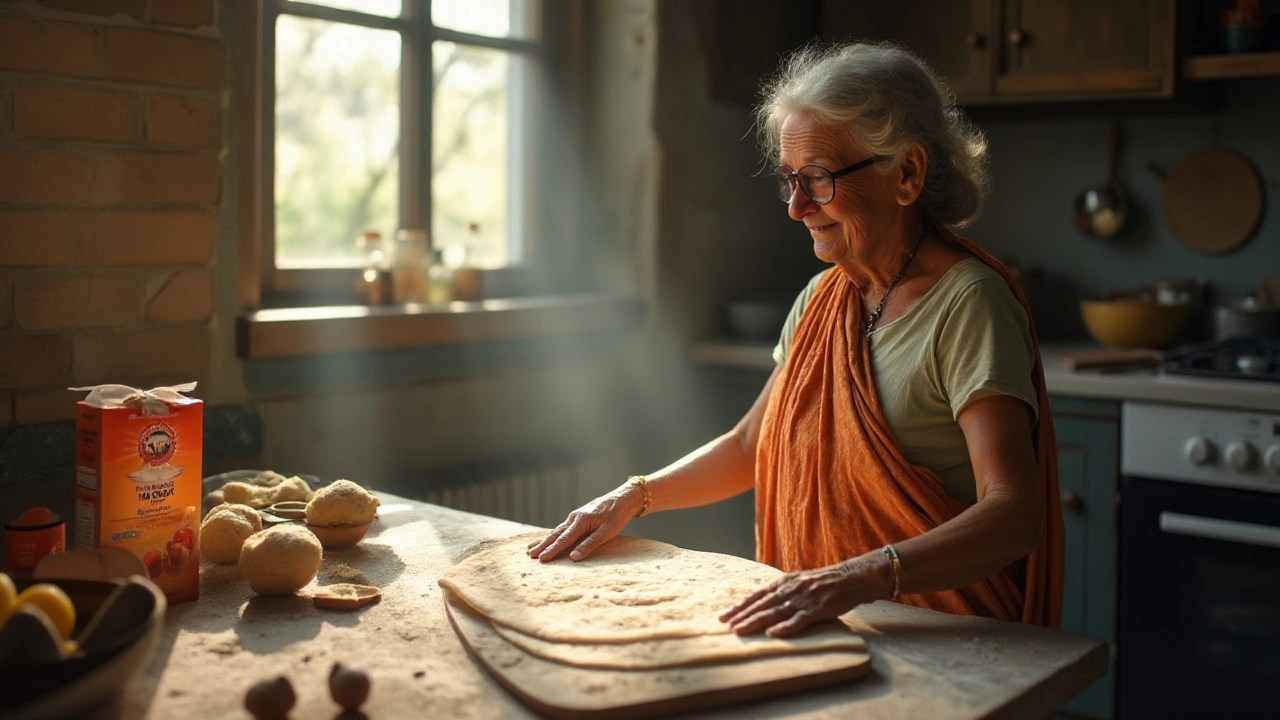Indian Bread Tips: Quick Tricks for Perfect Roti, Paratha & Naan
Did you know most Indian breads become flawless with just a few small adjustments? Whether you’re rolling roti for breakfast or frying paratha for dinner, the right moves save time and boost flavor.
Below you’ll find the most practical tips that work in any kitchen – no fancy equipment required. Grab your flour, pan, and a little patience, then let’s turn ordinary dough into restaurant‑level breads.
Roti and Chapati: Keep Them Soft
Start with fresh whole‑wheat flour (atta). Let the flour sit for 10‑15 minutes after adding water; this rest period hydrates the gluten and makes the dough easier to roll.
When rolling, aim for a uniform 6‑mm thickness. Too thin and the roti dries out; too thick and it stays raw in the center. A quick trick: dust the rolling board with a mix of flour and a pinch of gram‑flour (besan). The extra protein helps prevent tearing.
Heat the tawa (flat pan) to a medium‑high level before you place the roti. A hot surface creates the puff‑up you love. Flip only once – after the first side shows light brown spots, press gently with a cloth napkin. The steam trapped inside finishes the cooking and keeps the roti soft.
Finish with a light brush of melted ghee or a drizzle of oil. This adds flavor and stops the roti from drying out while it rests. Cover the cooked rotis in a clean kitchen towel for a few minutes; the steam inside makes them extra fluffy.
Paratha and Naan: Getting the Right Crunch
Paratha needs layers of oil or ghee between the folds. After the dough rests, roll it out, brush a thin layer of melted ghee, then fold it into a triangle or roll it into a coil. Repeat the oil‑brush and fold step two to three times. The thin oil sheets create flaky layers that separate when cooked.
When you heat the pan, use medium heat and let the oil shimmer before adding the paratha. Cook each side for about 30‑45 seconds, then press lightly with a spatula. The pressure helps the layers puff and turn golden.
For naan, a yogurt‑based dough makes the crumb tender and gives a slight tang. Let the dough rise for at least an hour – the extra fermentation adds air pockets. Shape the naan into teardrop ovals, brush one side with water, and place it wet‑side down on a hot tawa or grill. The steam from the water creates those characteristic bubbles.
After the first side shows brown spots, flip and brush the cooked side with melted butter or ghee. This final glaze adds richness and keeps the naan soft inside while the exterior stays crisp.
These tips work whether you’re cooking for one or feeding a crowd. Small changes – a short rest, a pinch of gram‑flour, or an extra brush of ghee – make a huge difference in texture and taste. Try them next time you reach for the flour, and you’ll see why home‑cooked Indian breads can rival any restaurant.",
The Truth About Using Baking Soda in Roti Recipes
Roti is a staple in many households, cherished for its versatility and wholesome goodness. Many cooks wonder if adding baking soda can enhance the texture of this beloved bread. This article explores whether baking soda is beneficial in roti-making, debunking myths and offering practical advice. Learn about the science and traditions behind roti preparation to help you decide if this ingredient fits your culinary routine.
